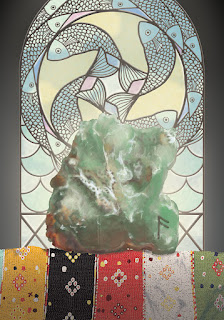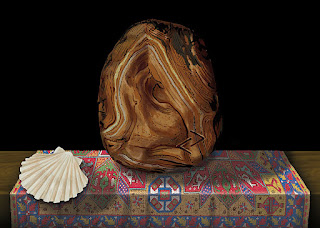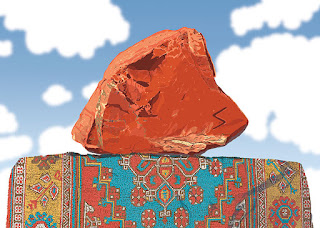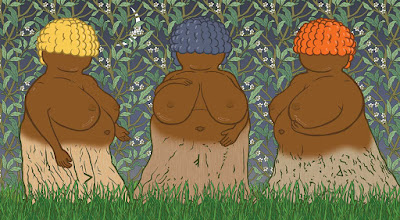Alessia Delvecchio
"Jacinth”,
digital painting print on gatorfoam
(1/50) 100x140x2cm, 2025
In "Jacinth", la cui traduzione è Giacinto, viene rappresentato il minerale in primo piano con incisa la runa Jera che rappresenta i cicli naturali, l'eterno ritorno. Il Giacinto è indicato come undicesima pietra di fondazione delle mura della Città Santa nell’apocalisse di Giovanni e indica l’apostolo Giacomo il minore. La pietra poggia sopra un tappeto cinese del XIX secolo, con ricorrente motivo della nuvola. Il tappeto è un omaggio al divino e per sua natura crea un’atmosfera mistica, ad ogni nodo intrecciato è legato il pensiero di chi lo ha lavorato dedicandovi ore della propria vita. Su di un tappeto persiano è stato scritto: “Hanno filato la sua trama col filo dell’anima”.
Gli attributi di Giacomo il minore sono legati al segno dell’acquario, alla protezione dei viandanti e al tempo meteorologico. Questo lavoro appartiene alla serie intitolata "Way back into Soul", in cui sono rappresentati antichi miti in chiave moderna.
In “Jacinth", the mineral is represented in the foreground engraved with the Jera rune, which represents natural cycles, the eternal return. Jacinth is indicated as the eleventh foundation stone of the walls of the Holy City in the apocalypse of John and indicates the apostle James the Less. The stone rests on a 19th-century Chinese carpet, with a recurring cloud motif. The carpet is a tribute to the divine and by its nature creates a mystical atmosphere, the thoughts of those who worked on it are linked to each intertwined knot, dedicating hours of their lives to it. On a Persian carpet it was written: "They spun its weft with the thread of the soul". The attributes of James the Less are linked to the sign of Aquarius, the protection of wayfarers and the weather. This work belongs to a series entitled "Way back into Soul", in which ancient myths are represented in a modern way.
















